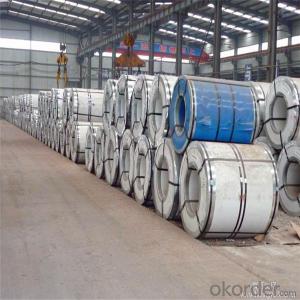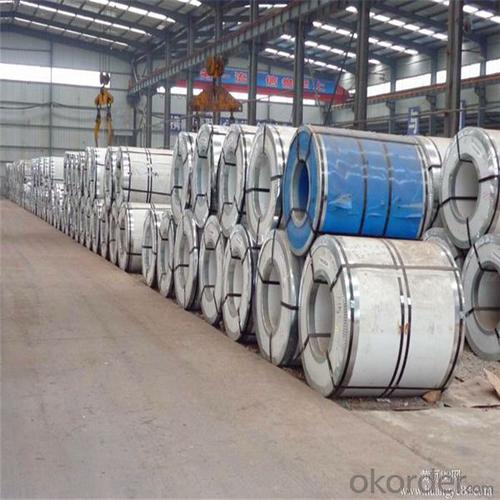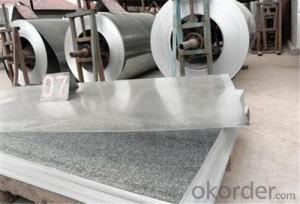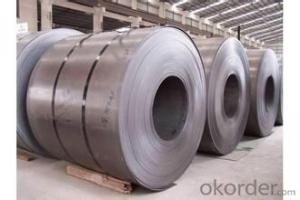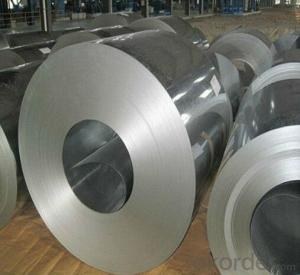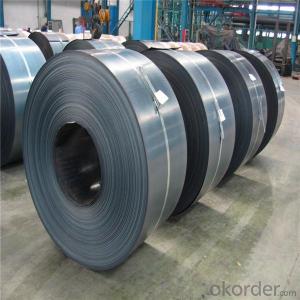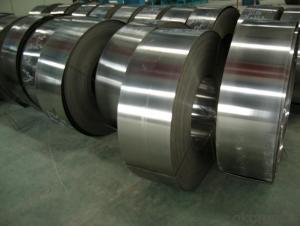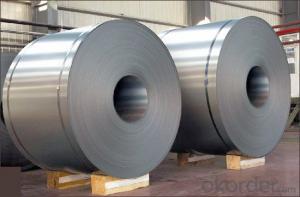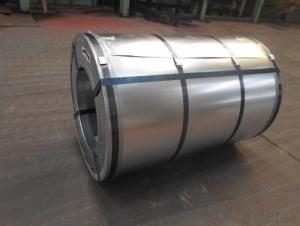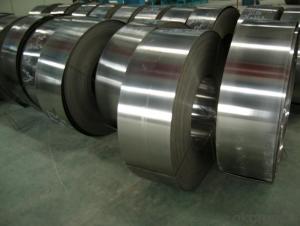Prime Cold Rolled Steel Coils with Low Price China Suppiler
- Loading Port:
- China main port
- Payment Terms:
- TT OR LC
- Min Order Qty:
- 12 m.t.
- Supply Capability:
- 50000 m.t./month
OKorder Service Pledge
Quality Product, Order Online Tracking, Timely Delivery
OKorder Financial Service
Credit Rating, Credit Services, Credit Purchasing
You Might Also Like
Specification
Standard:
ASTM,GB,DIN,JIS
Technique:
Cold Rolled
Shape:
Round
Surface Treatment:
Oiled,Bright
Steel Grade:
Q195,Q215,Q235,Q215B,Q235B
Certification:
ISO,SGS,BV,CE
Thickness:
0.18mm-1.8mm
Width:
1000mm-1600mm
Length:
requirement
Outer Diameter:
according to weight
Net Weight:
12mt
Packaging:
Standard Export Packing
Product Description
201 2B, BA Stainless Steel Strips/CoilsCold Rolled Stainless Steel Coil (POLISHING)
Thickness: 0.15mm to 1.80 mm
Width: 20mm - 690mm
Finish: 2B BA (two side polishing)
201 2B, BA Stainless Steel Coil
Hot rolled stainless steel coil:
Thickness: 2.0mm up
Width: 20-1500mm
Finish: No. 1
| Thickness | cold rolled,0.15-1.8mm, hot rolled, 2.0mm up |
| Width | cold rolled,20-690mm, hot rolled, 20-1500mm |
| Finish | cold rolled, 2B BA (two side polishing)201 2B,BA hot rolled,No.1 |
Chemical composition:
1) AOD (Low carbon, high nickel) J1 material:
Ni: 1.0-1.5%, Cu:0.8-1.0%, Cr:>13.5%, Mn:9-11%, C:<0.1%
2) AOD (Low carbon, high nickel) J3 material:
Ni: 1.0-1.5%, Cu:0.5-0.8%, Cr:>12%, Mn:9-11%, C:<0.1%
3) Induction (High carbon, low nickel) material:
Ni: 0.6-0.9%, Cu:0.6-0.8%, Cr:>13.0%, Mn:9-11%, C:>0.12%201 2B, BA Stainless Steel Strips/Coils
Cold Rolled Stainless Steel Coil (POLISHING)
Thickness: 0.15mm to 1.80 mm
Width: 20mm - 690mm
Finish: 2B BA (two side polishing)
201 2B, BA Stainless Steel Coil
Hot rolled stainless steel coil:
Thickness: 2.0mm up
Width: 20-1500mm
Finish: No. 1
Application: Stamping, Utensils, Kitchenware, Cookware, Decorate, Making pipe and so on
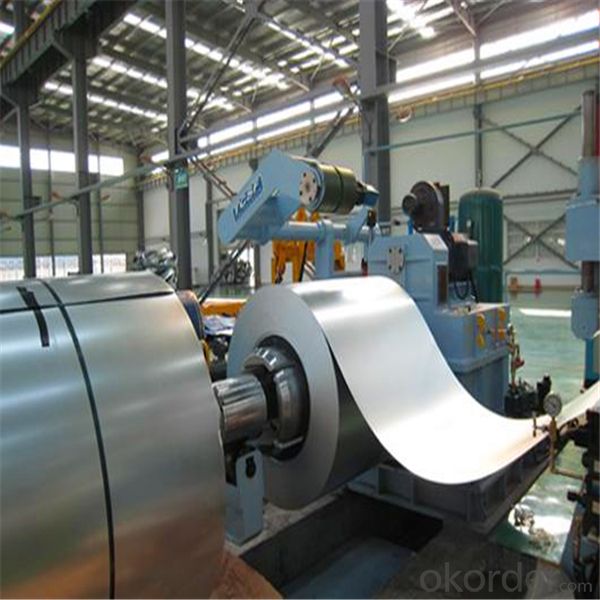
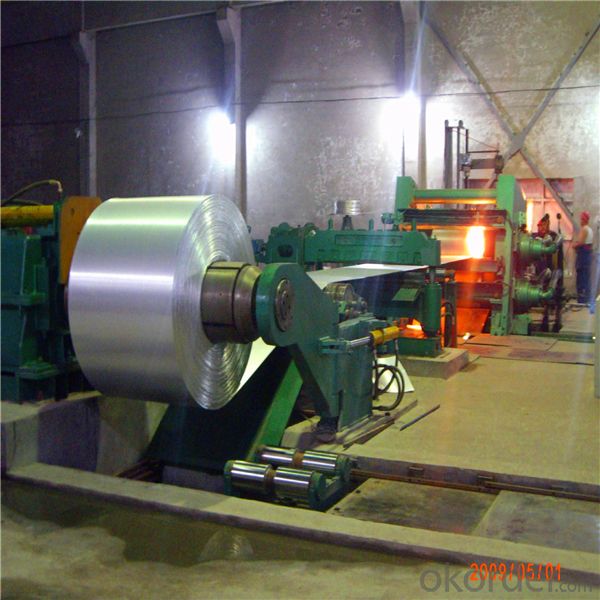
- Q: Can steel coils be customized in terms of size and shape?
- Yes, steel coils can be customized in terms of size and shape.
- Q: does anyone out there know where to get a good deal on a pedal steel guitar? i am from northern indiana and i'm willing to travel some if i have to.i am just getting into pedal steel guitar and i really don't have any idea what i need. i don't know how to play a guitar (i do know how to play the piano and the drums) at all but i want to learn to play the pedal stell guitar and i can't do that without getting one first so, if anyone can help me out i would greatly appreciate it! :o)
- Pedal steel guitars are a challenge to learn but they're a great instrument. More, even a starter pedal steel is going to run you $800 or so. Elderly Instruments in Lansing, Michigan sells a Carter brand starter pedal steel for $795 which is about as low as I've seen new ones. It has 3 foot pedals and 4 knee levers so it's nicely equipped. From northern Indiana it's not that far I would think. Good luck.
- Q: What are the dimensions of steel coils used in automotive accessory manufacturing?
- The dimensions of steel coils used in automotive accessory manufacturing can vary depending on the specific application and requirements. However, typical dimensions for steel coils used in this industry range from 0.3 mm to 4.0 mm in thickness and from 600 mm to 2000 mm in width. The length of the coil can also vary, but it is commonly around 2000 meters.
- Q: What are the common coil thickness and width combinations available for steel coils?
- The common coil thickness and width combinations available for steel coils can vary depending on the specific requirements and standards of the industry. However, there are some commonly found combinations that are widely used. In terms of coil thickness, common options range from thin to thick coils. Thin coils typically have a thickness ranging from 0.4mm to 3.0mm, while medium thickness coils can be around 3.0mm to 6.0mm. For thicker coils, the range can be from 6.0mm to 25.0mm or even higher, depending on the specific application. Regarding coil width, it also varies based on the intended usage. Some common options include coils with widths of 600mm, 750mm, 900mm, 1000mm, 1200mm, 1250mm, and 1500mm. However, wider or narrower coils can also be available depending on the specific requirements of the customer or industry. Ultimately, the most suitable coil thickness and width combination will depend on factors such as the intended application, manufacturing processes, transportation limitations, and customer preferences. It is essential to consult with steel coil manufacturers or suppliers to determine the most appropriate options for your specific needs.
- Q: What kind of insulation should be used in a steel building?
- Vinyl fiberglass insulation is getting popular with the steel building industry. The vinyl fiberglass insulation offers a shining look to the building and is resistant to dust as well as condensation. Effective ventilation inside the steel building can also help in preventing the condensation process inside the building. Besides, the building doors should be insulated effectively so as to minimize the heat loss. Be sure to seal all the door gaps in the building. All these steps are necessary to follow to get an effectively insulated steel building.
- Q: Can steel coils be coated with light-reflective materials?
- Yes, steel coils can be coated with light-reflective materials.
- Q: How are steel coils used in the manufacturing of industrial pumps?
- Steel coils are used in the manufacturing of industrial pumps as they provide a strong and durable material for constructing pump components such as casings, impellers, and shafts. The coils are typically cut, shaped, and welded to create the necessary parts, ensuring the pumps can handle high pressures and harsh operating conditions in various industries.
- Q: We are going to build a house with a steel frame.Someone told me today that these houses have problems with humidity.Is that true?Please tell me all you know..
- That's a first for me. The only draw back to a steel frame home is the cost, not only in material but also in labor. They do make a great home with proper installation. Make sure your contractor and framing crew have experience with metal frame construction. There is some differences in building codes, etc. Good Luck and happy building.
- Q: What are the different methods of blanking steel coils?
- There are several methods used for blanking steel coils, which are: 1. Shearing: This method involves cutting the steel coil into the desired size and shape using a shear or a set of shears. Shearing is a common method used for blanking steel coils as it is a fast and cost-effective process. It is suitable for cutting thin to medium-thickness steel coils. 2. Laser cutting: Laser cutting is a precise and efficient method that uses a high-powered laser beam to cut through the steel coil. It is suitable for cutting complex shapes and thick steel coils. Laser cutting provides clean and accurate cuts, making it a preferred method for high-quality blanking. 3. Waterjet cutting: Waterjet cutting uses a high-pressure stream of water mixed with an abrasive material to cut through the steel coil. This method is versatile and can cut through various materials, including steel, without generating heat. Waterjet cutting is suitable for cutting thick steel coils and is often used for intricate shapes and designs. 4. Stamping: Stamping is a method that involves pressing a die into the steel coil to cut out the desired shape. This process is commonly used for high-volume production as it can rapidly cut multiple pieces at once. Stamping is suitable for cutting simple shapes and is often combined with other processes like shearing or laser cutting for more complex shapes. 5. Plasma cutting: Plasma cutting uses a high-velocity jet of ionized gas to cut through the steel coil. It is suitable for cutting thick steel coils and can handle a wide range of materials. Plasma cutting is known for its speed and versatility, making it a popular method for blanking steel coils. These methods of blanking steel coils provide different benefits depending on the requirements of the project, such as speed, precision, complexity of shapes, and material thickness. The choice of method depends on factors like cost, production volume, desired quality, and turnaround time.
- Q: What is the current value of steel? Is it expected to increase in value?
- The steel in steel cents is the same as the steel in soup cans you throw out all the time. There is no sense in holding steel cents for their value as scrap. There are way too many steel cents around for them to ever have much numismatic value.
Send your message to us
Prime Cold Rolled Steel Coils with Low Price China Suppiler
- Loading Port:
- China main port
- Payment Terms:
- TT OR LC
- Min Order Qty:
- 12 m.t.
- Supply Capability:
- 50000 m.t./month
OKorder Service Pledge
Quality Product, Order Online Tracking, Timely Delivery
OKorder Financial Service
Credit Rating, Credit Services, Credit Purchasing
Similar products
Hot products
Hot Searches
Related keywords
